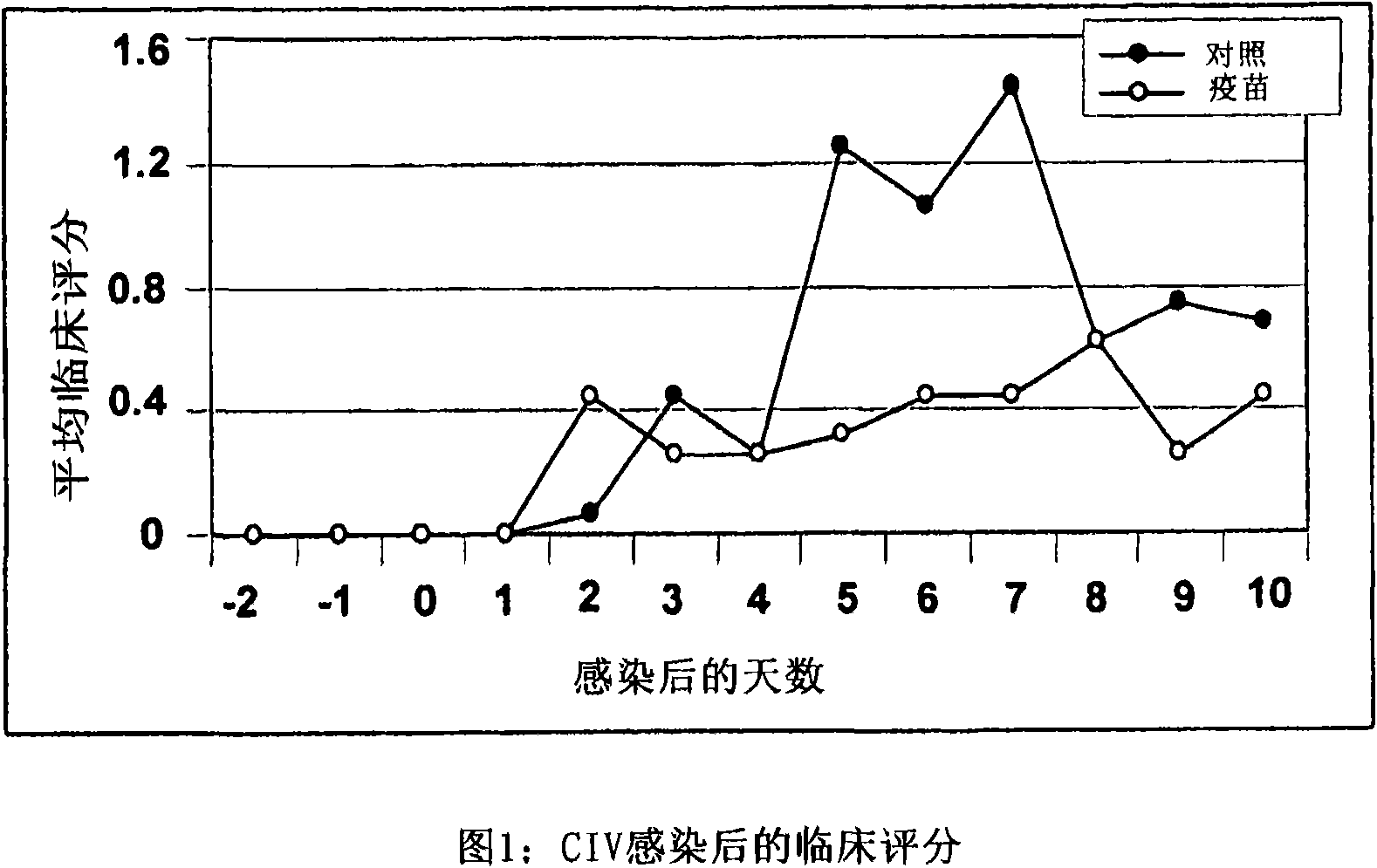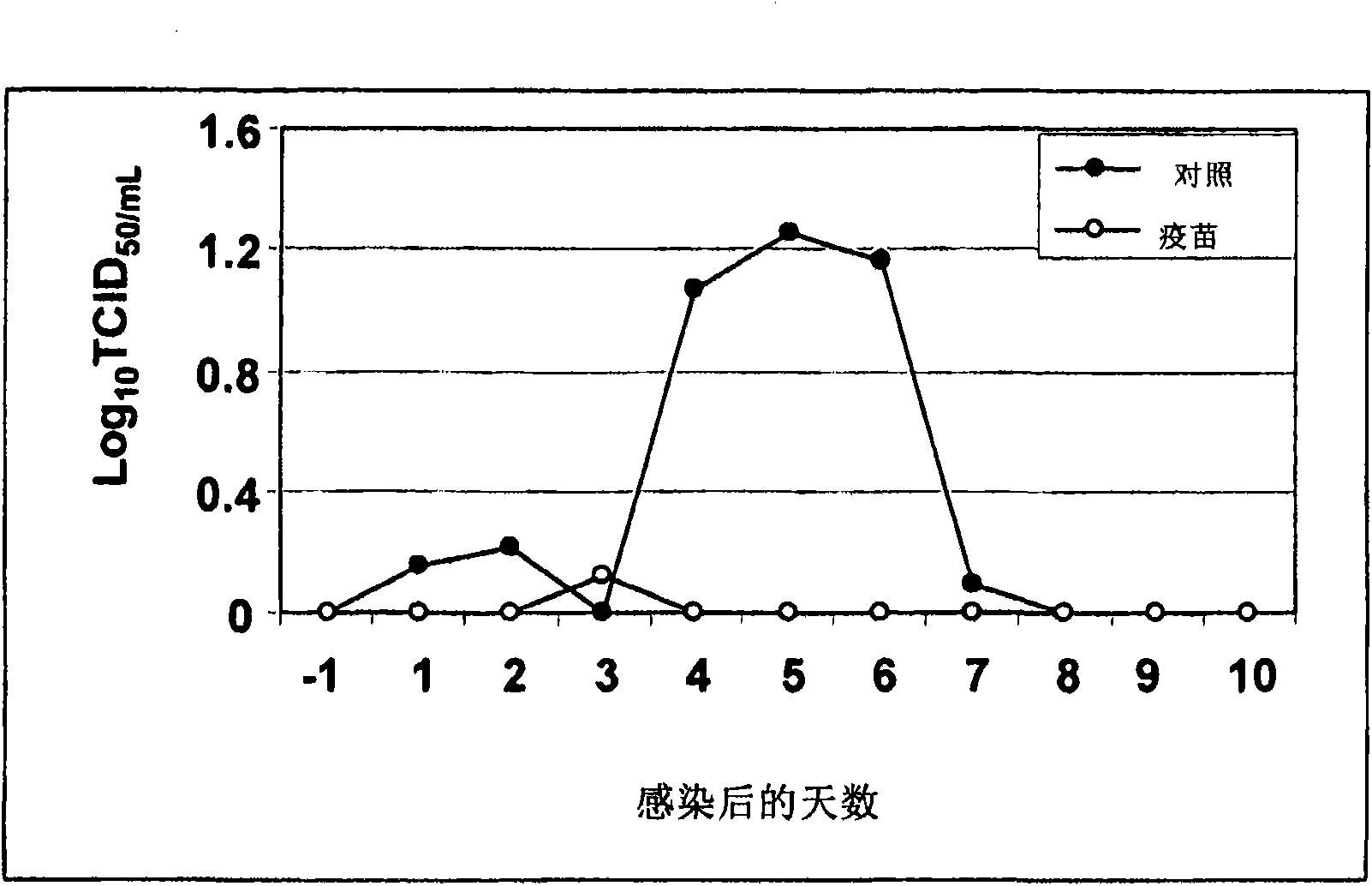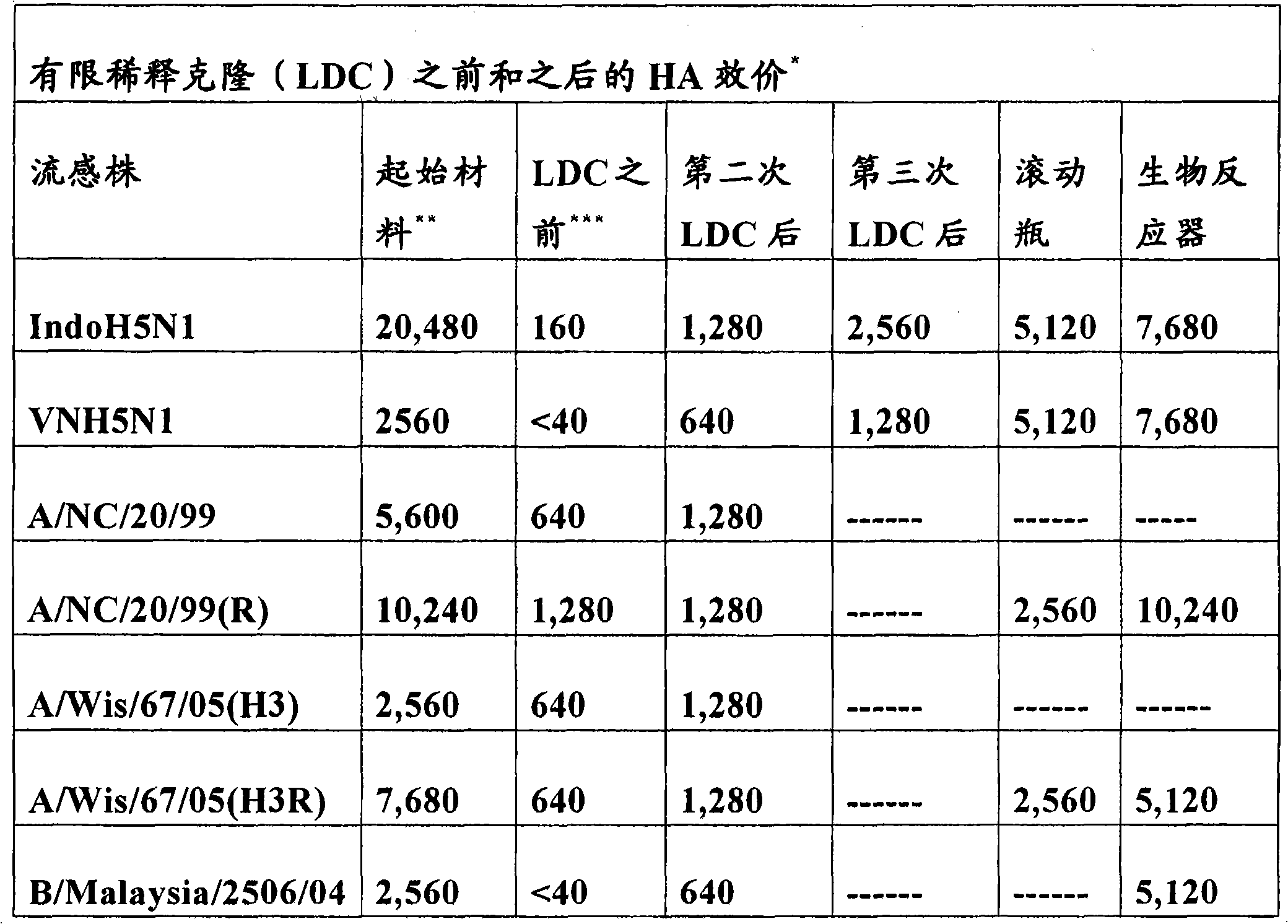Method for replicating influenza virus in culture
A technology of influenza virus and human influenza virus, applied to vaccines for canine respiratory diseases, new immunogenic compositions, and selected in the field of influenza viruses grown in human embryonic kidney cells, can solve the problem of affecting the antigenicity of vaccines, which is difficult to achieve, etc. question
- Summary
- Abstract
- Description
- Claims
- Application Information
AI Technical Summary
Problems solved by technology
Method used
Image
Examples
Embodiment 1
[0114] Example 1: Chemical reagents and biological reagents
[0115] The infection medium used contains 1L DMEM (Cambrex, catalog number 04-096) or equivalent, stored at 2-7°C; 20mL L-glutamine (Cellgro, catalog number 25-005-CV) or equivalent, stored in -10℃ or lower temperature, once thawed, it can be stored at 2-7℃ for up to 4 weeks; and IX trypsin (Sigma product number T0303, CAS No.9002-07-7) or equivalent, subpackaged And stored frozen at -5 to -30°C. The infection medium is newly prepared before infecting the cells.
[0116] The cell culture medium is prepared as follows: 1 L DMEM, 20 mL L-glutamine, 50 mL fetal bovine serum (Gibco catalog number 04-4000DK) or equivalent (note: from countries without BSE). After preparing the complete medium, store it at 2-7°C for no more than 30 days.
[0117] The EDTA-trypsin (Cellgro catalog number 98-102-CV or equivalent) used for the passage of cells is stored at -5 to -30°C, and the expiry date is indicated by the manufacturer.
Embodiment 2
[0118] Example 2: Cell culture preparation
[0119] Because the protease dilution used in the viral infection step can vary from batch to batch, a new batch of trypsin is titrated before use to establish an optimal level. The example of titration is to serially dilute Type IX trypsin in DMEM containing L-glutamine, and use a semi-logarithmic dilution (10 -1 , 10 -1.5 , 10 -2 , 10 -2.5 Wait). Wash each well of the plate twice with 280 μL of PBS with a 96-well plate containing a single layer of freshly confluent Vero cells. Immediately after washing, add 200 μL of type IX trypsin of each dilution to the plate in a row. Then put the plate at 37°C plus or minus 2°C in 5% CO 2 Incubate in medium and observe the cells 4 days later. The lowest dilution factor of trypsin that shows little or no effect on cell health is selected as the appropriate concentration of trypsin for the isolation and optimization of influenza infection. It is satisfactory and common that there is little or no c...
Embodiment 3
[0126] Example 3: Limiting dilution cloning
[0127] The dilution tube preparation and sample dilution for limiting dilution clones are as follows. Set the test tube (12×75mm) on the test tube rack and label it. One sample is tested per plate, and the dilution series of each sample is 10 -1 To 10 -10 . The diluted medium was dispensed into each test tube in 1.8 mL volume with a serological pipette. The first test tube is labeled Virus Identification. Several other test tubes are prepared to be used as dilution controls and replaced if errors occur during the dilution period. Shake and mix the sample for about 5 seconds, then transfer 200 μL of sample to 10 -1 The dilution tube prepares the initial dilution. Continue to serially dilute to 10 -10 . For each dilution, the sample is mixed by shaking and the pipette tip is changed between dilutions.
[0128] The dilution was transferred to the cell plate as follows. Immediately before use, pour out the culture medium from the cell pl...
PUM
| Property | Measurement | Unit |
|---|---|---|
| length | aaaaa | aaaaa |
| length | aaaaa | aaaaa |
Abstract
Description
Claims
Application Information
 Login to View More
Login to View More - R&D
- Intellectual Property
- Life Sciences
- Materials
- Tech Scout
- Unparalleled Data Quality
- Higher Quality Content
- 60% Fewer Hallucinations
Browse by: Latest US Patents, China's latest patents, Technical Efficacy Thesaurus, Application Domain, Technology Topic, Popular Technical Reports.
© 2025 PatSnap. All rights reserved.Legal|Privacy policy|Modern Slavery Act Transparency Statement|Sitemap|About US| Contact US: help@patsnap.com



